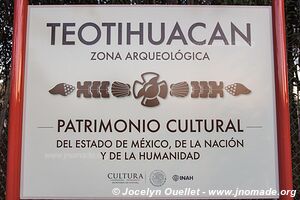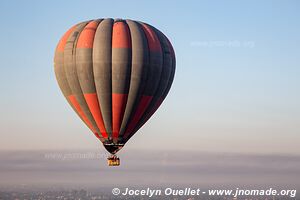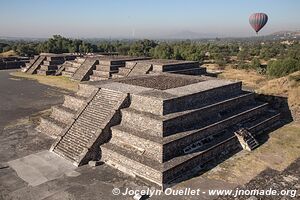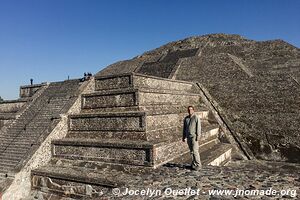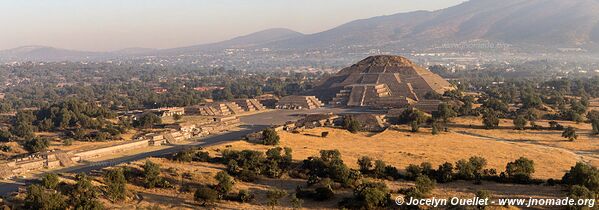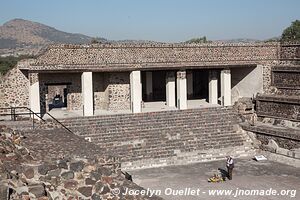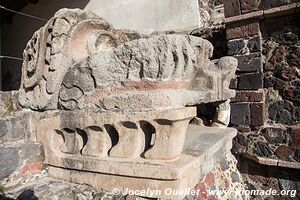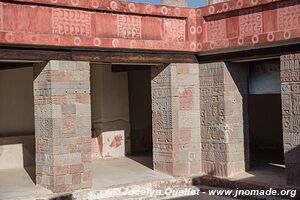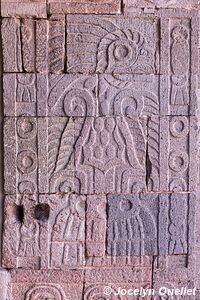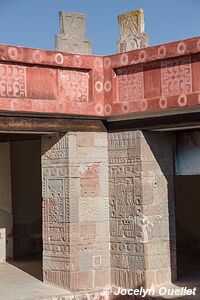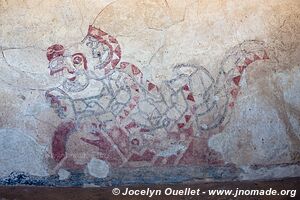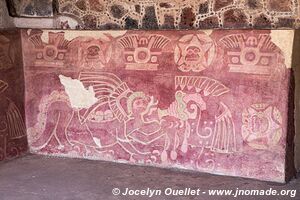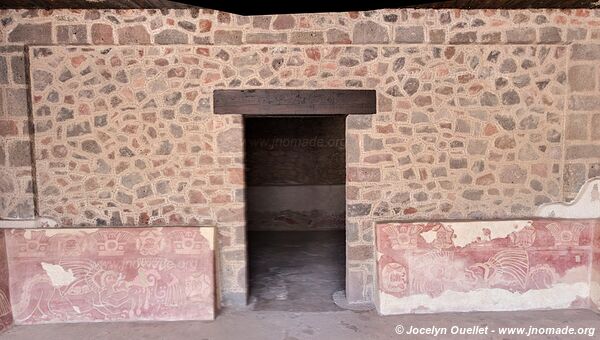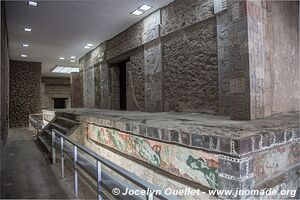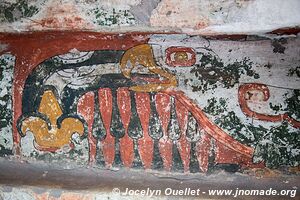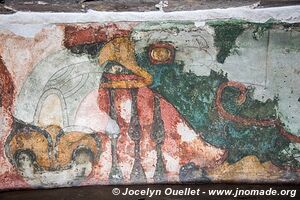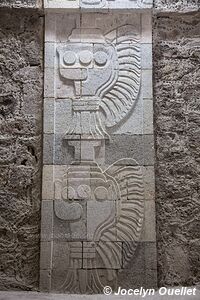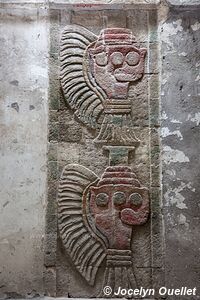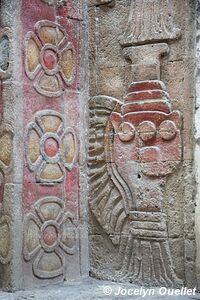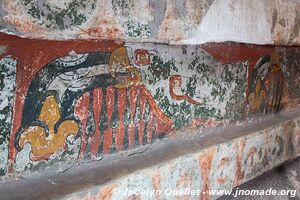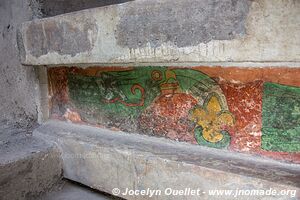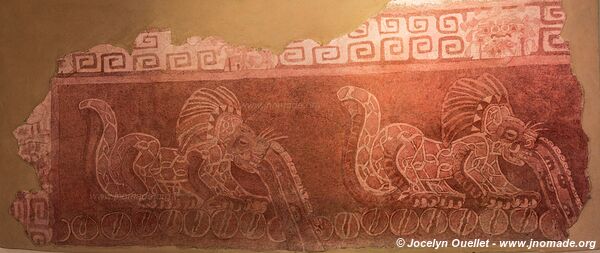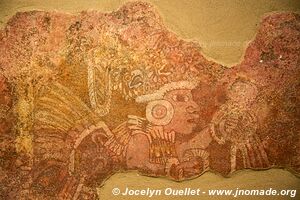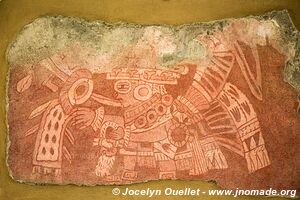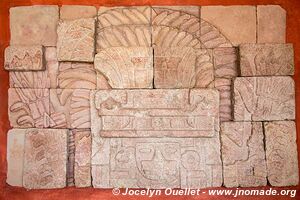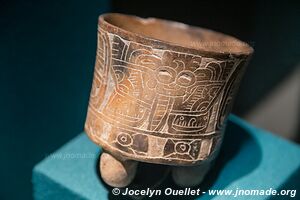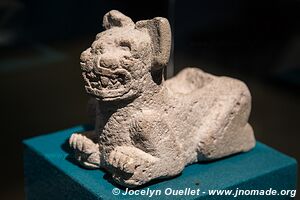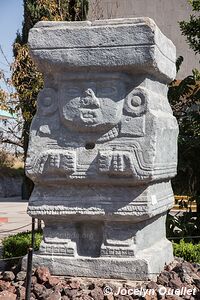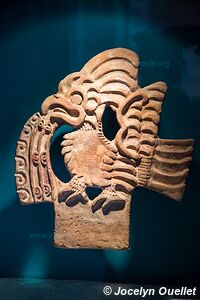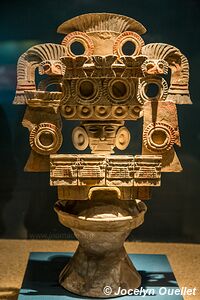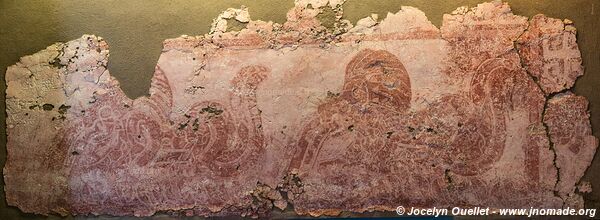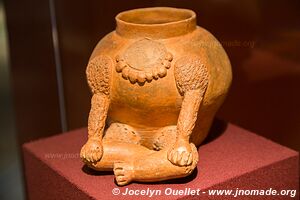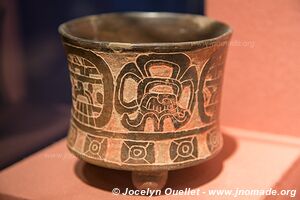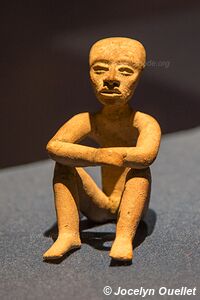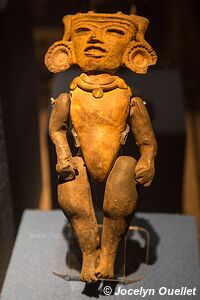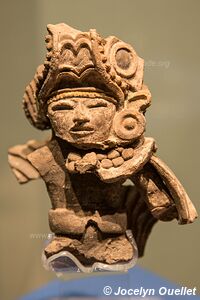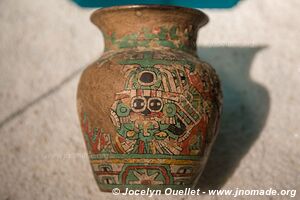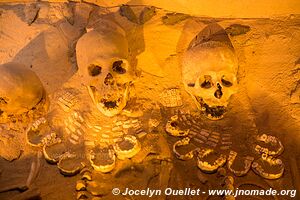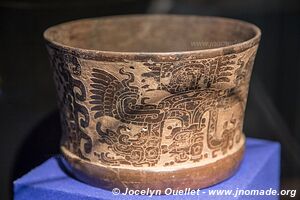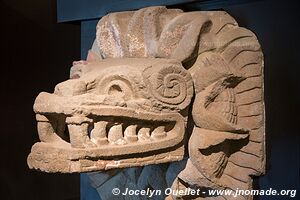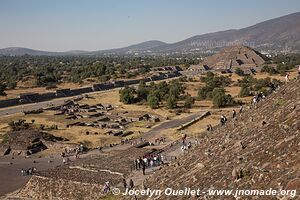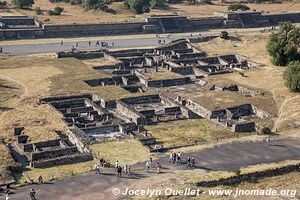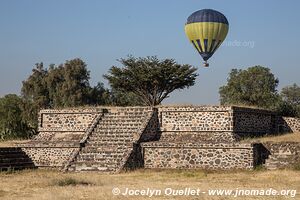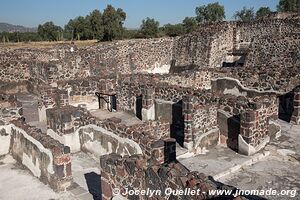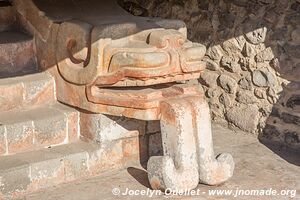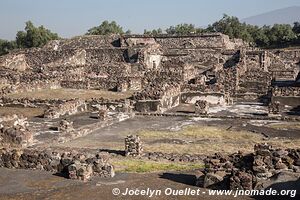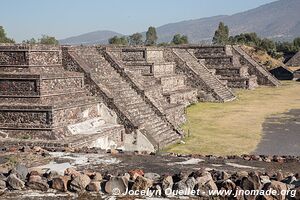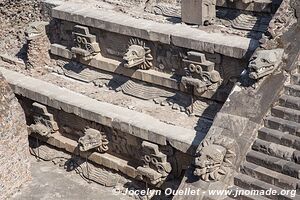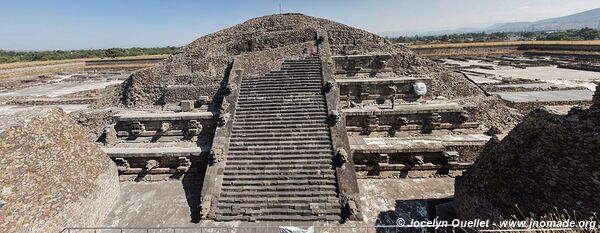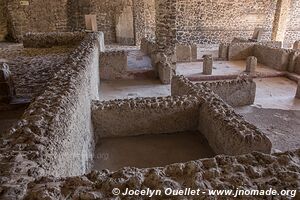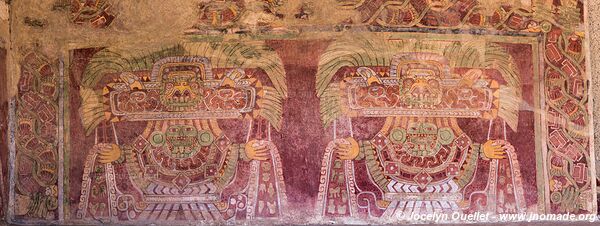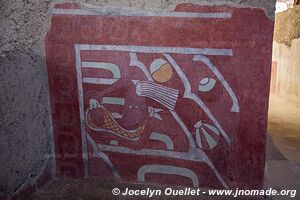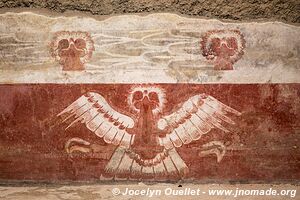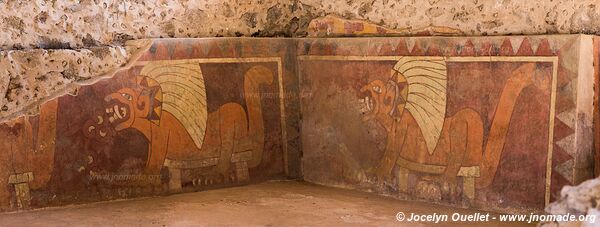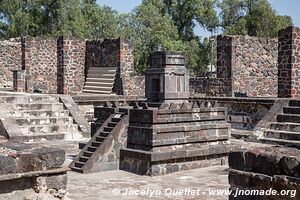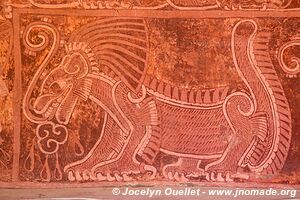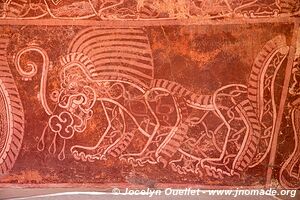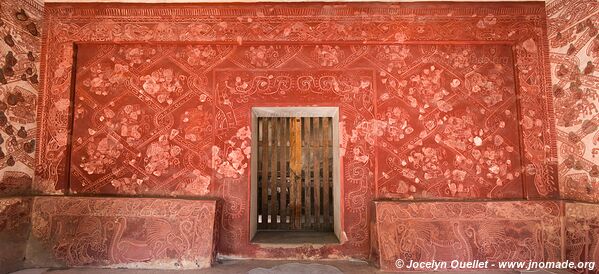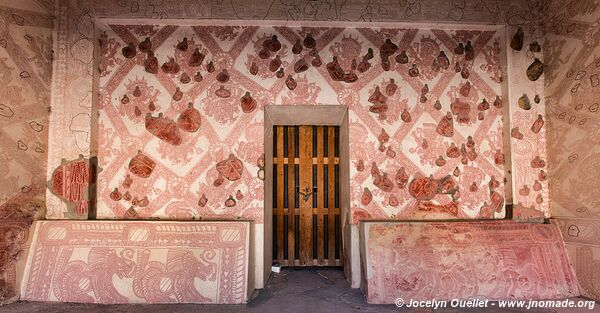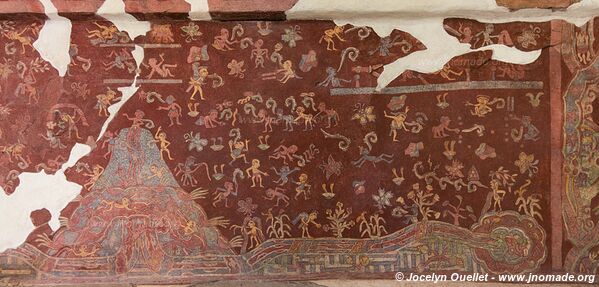Teotihuacan
The pyramids of Teotihuacan are among the most famous and most visited of Mexico. The site is located 50 km north-east of Mexico City and is a UNESCO Cultural Heritage site. The city of Teotihuacan once spread over 20 km2, but nowadays only a small part of it can be seen.
Teotihuacan was the biggest pre-Hispanic city of Mexico and probably the capital of the largest empire of that time. The city layout was plotted at the beginning of the 1st century AD, and the Pyramid of the Sun was completed by AD 150. The rest of the city was developed between AD 250 and AD 600. Social, environmental and economic factors contributed to the decline and eventual collapse of the city in the 8th century.
Pyramid of the Moon
The Pyramid of the Moon is smaller than the Sun Pyramid, but has a more elaborate architecture. Completed around AD 300, the rectangle structure has a base of 152 by 132 metres and a height of 43 metres.
In front of the pyramid, the Plaza of the Moon contains 12 smaller pyramids for a total of 13. This key number is of great importance in the Mesoamerican ritual calendar (Mexico and Central America).
Pyramid of the Sun
It's the world's third-largest pyramid. The largest ones are from Egypt, the Cheops and Cholula pyramids. At the height of Teotihuacan, the pyramid was painted a bright red and must have been an impressive sight at sunset.
The pyramid was built between AD 100 and AD 150. Its square base measures 22 metres and its height is 70 metres. The structure is made of three million tonnes of stone and was built without metal tools, the wheel, or pack animals.
Quetzalpapálotl Palace
Next to the Plaza of the Moon, the central part of this palace is called the 'Patio of Pillars.' The pillars are decorated with birds reliefs surrounded by butterflies and quetzals (a bird from Central America).
It was probably a house for priests or some leaders.
Palacio de los Jaguares
This palace displays the jaguar god blowing conch shells and praying to the rain god Tláloc.
Templo de los Caracoles Emplumados
This temple is located on a small pyramid decorated with birds painting that resemble quetzals or parrots. The temple with its base is entirely located under a bigger pyramid.
Mural Paintings Museum
This museum showcases superb paintings from the ancient city of Teotihuacan. Some of these murals are reconstructions.
Imagine the temples and upper-class houses decorated with these paintings. It must have been extraordinary when the city was at its peak.
Museo del Sitio (Site Museum)
This museum displays the rich art that was developed in Teotihuacan. The artisans at that time must have been very skilled...
Calzada de los Muertos
The Avenue of the Dead is a 2 km road linking the Pyramid of the Moon to the Ciudadela and passing in front of the Pyramid of the Sun.
On the adjacent photo, I am standing on the Pyramid of the Sun and the Avenue of the Dead can be seen up to the Pyramid of the Moon. However, only about 1/3 of the avenue is visible. On the left (behind), there is more than one kilometre of this avenue flanked for most of its length by ruins of living quarters.
The photos below show some of the structures flanking the Avenue of the Dead.
La Ciudadela
At the southern end of the Avenue of the Dead is the Ciudadela. Archeologists think it was the house of the supreme leader of the city. It's a vast complex surrounded by walls with a big open space inside. To the east of this inner courtyard is the Quetzalcóatl Temple (see below).
La Ciudadela - Temple de Quetzalcóatl
This temple was built around AD 250 and was probably used for human sacrifices. Skeletal remains of 117 people were found near the temple. DNA tests show that there were from various regions of Mesoamerica (Mexico and Central America).
The temple on the two pictures below had 7 levels. Nowadays, only 4 levels with superb carvings can be seen. The temple is 'hidden' behind the square pyramid on the panorama above.
Palacio de Tetitla
The Palace of Tetitla is located a few hundreds metres to the west of the Avenue of the Dead. In this large palace, more than 120 walls are decorated with murals of the god Tláloc (rain), jaguars, serpents, and eagles.
Palacio de Atetelco
About 400 metres further west than the previous palace is the Palace of Atetelco. It contains a mix of original and restored murals.
Palacio de Tepantitla
Unlike the two previous palaces, this one is located on the eastern side of the Avenue of the Dead, about 500 metres north-east of the Pyramid of the Sun. It contains paintings of the Rain God Tláloc.



